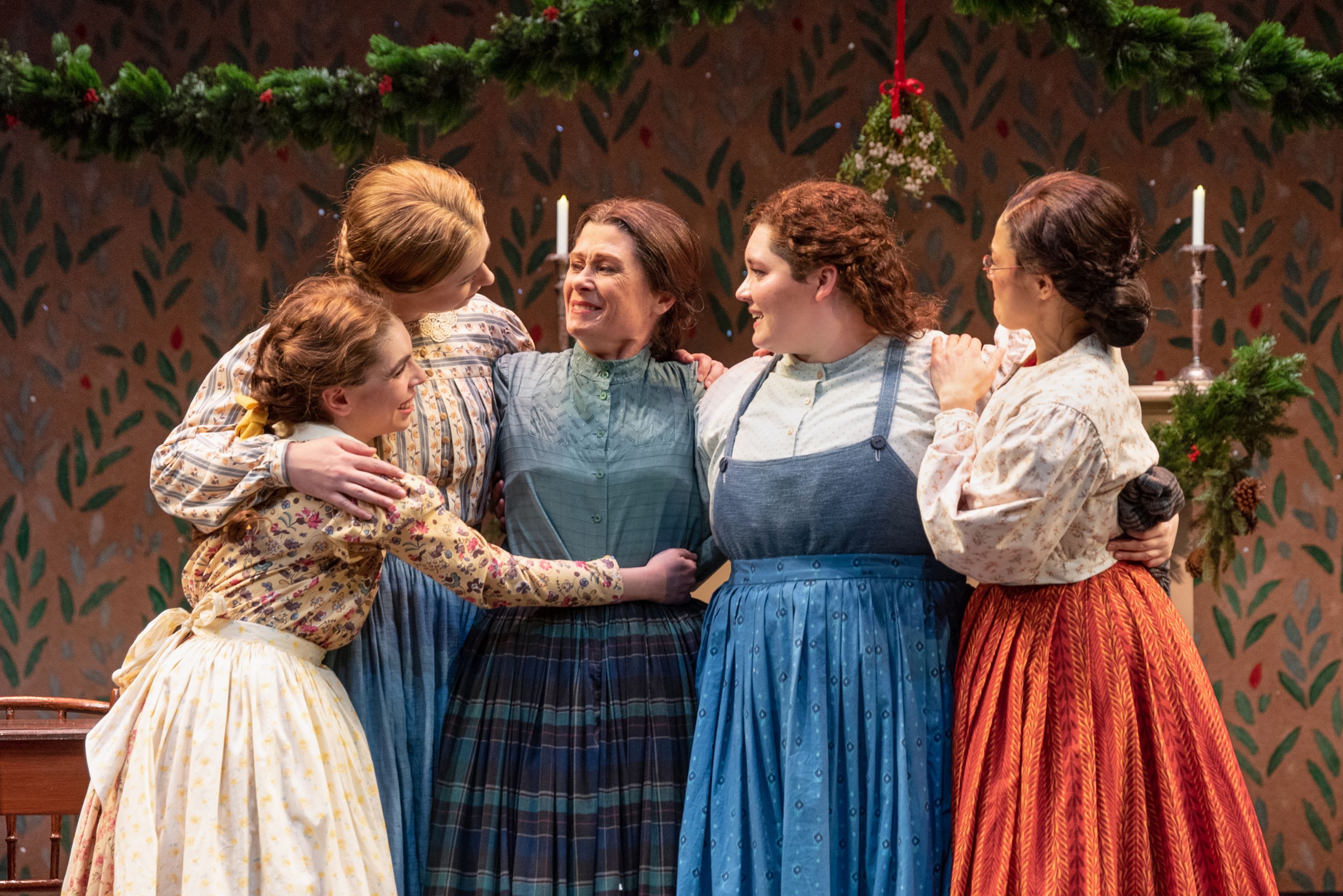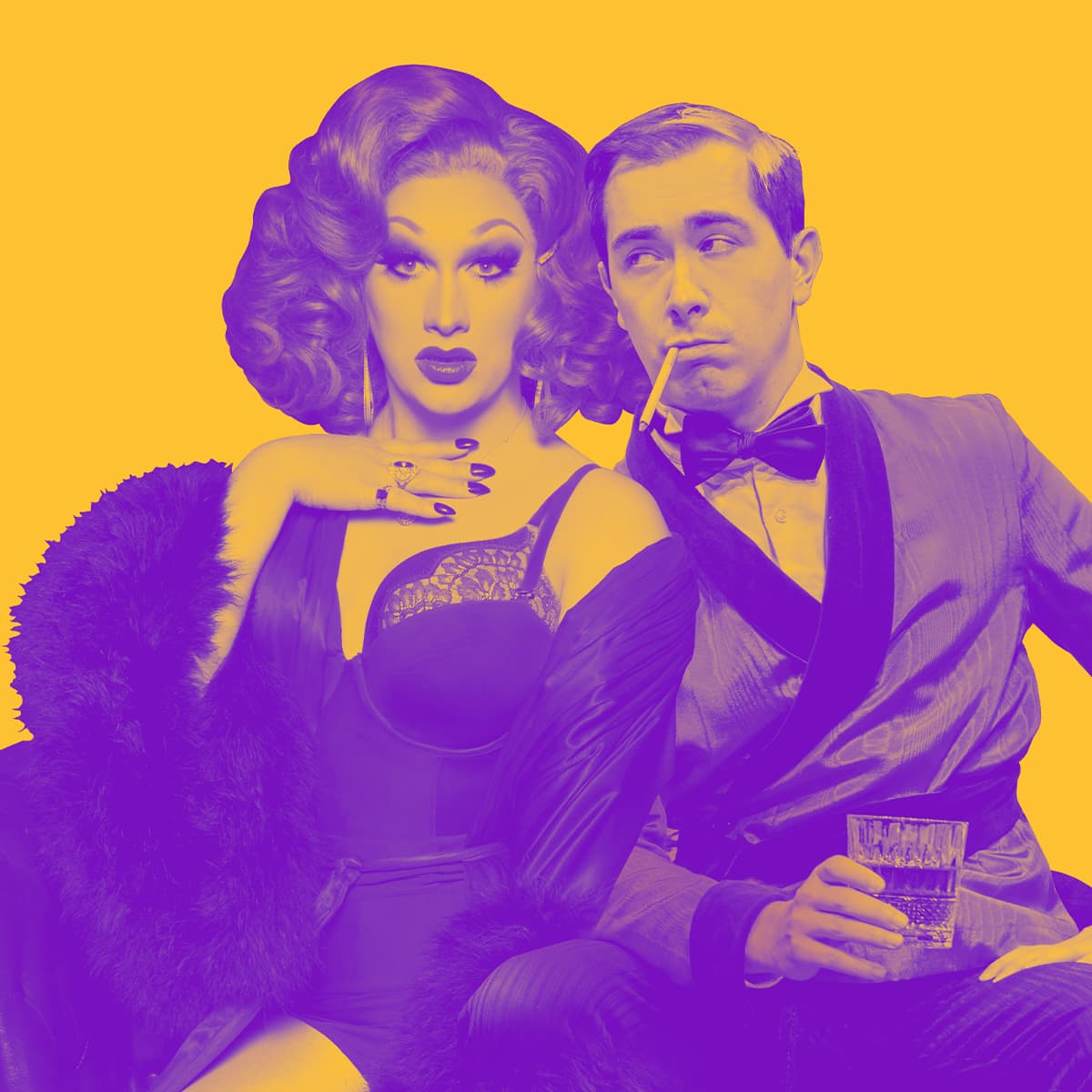DEEP DIVE
Little Women and A Country at War with Itself
In her adaptation of Louisa May Alcott’s perennially popular novel Little Women, playwright Kate Hamill explores the social and political dynamics that shape the lives of Alcott’s beloved characters, namely, the story’s setting during the U.S. Civil War. Part of what has made Alcott’s novel so compelling for generations of readers is this dramatic context, with the bloody and harrowing Civil War serving as a backdrop to the lives of Jo, Beth, Amy, and Meg March. But why set a book for young readers during this violent and tumultuous conflict, which claimed more than 620,000 lives over the course of four years?1
For one, the Civil War was a defining existential moment for the United States as a nation and touched the lives of every person living in the country during that period. The war offered Alcott a dramatic and ever-present antagonist for her characters, while also serving as a metaphor for the inner conflicts that roil both the March family as a unit and each of the siblings’ internal lives. The war had a huge impact on Alcott’s own life, too, so it’s not surprising that she would turn to that volatile time when writing a novel inspired by her own experiences of family and childhood. And Hamill decided to keep this context for her adaptation of the novel, exploring how that conflict reverberates in the lives of the characters and in our current moment.
Read on to explore how Alcott's personal experience working during wartime and her family's ties to the abolitionist movement shaped her view of the world, and how the cast and creative team of Seattle Rep’s production of Little Women are digging deeper into the role that racial identity plays in performing this new adaptation by Hamill.

A photograph of Louisa May Alcott. Source: Smithsonian National Portrait Gallery
Louisa May Alcott and the Civil War
While the patriarch of the March family serves as a Union army chaplain in Little Women, it was Louisa May Alcott herself who was the only person in her family to volunteer during wartime, incurring physical damage that she would contend with for the rest of her life. Louisa’s father, Bronson Alcott, was too old to serve when the war began, but in 1862 Louisa turned 30 and she immediately volunteered to be a nurse at the Union Hospital in Georgetown in Washington, D.C. While tending to the wounded from the Battle of Fredericksburg, Louisa contracted typhoid pneumonia. Bronson hurried to D.C. to care for his ailing daughter, just as Marmee leaves the March home to save her wounded husband in Little Women. As part of her treatment, Louisa was given calomel—a substance regularly used to treat various illnesses at the time, but later found to be destructive to the body in large quantities—which flooded her with mercury. Louisa dealt with the terrible side effects of this mercury poisoning for the rest of her life—a constant reminder of how the war had shaped her.2
As biographers of Louisa May Alcott have pointed out, her time serving as a nurse also had the effect of improving her writing, by inadvertently introducing the sheltered and inexperienced writer to the harsh realities of the world outside her tight-knit family. The firsthand knowledge of mortality that she had gained in D.C. deepened and matured Alcott’s writing, and she translated her experience into a collection of stories titled Hospital Sketches, which became her most successful piece of writing at that time.3 And when she started writing a novel for young girls in 1868 (on the advice of her publisher), Alcott chose this transformational moment—in her life, and in the life of her country—as the backdrop for her story.

Artwork depicting nurses tending to soldiers during the Civil War. Source: Library of Congress.
The Alcotts and Abolition
The root cause of the Civil War was the practice of slavery in the United States, and its abolition was a topic of much discussion and political action in the Alcotts’ house and in the community of Concord, Massachusetts, where they lived. Louisa’s father Bronson was an abolitionist who had lost his teaching job for refusing to dismiss a Black student from his school and harbored a person name John who had escaped enslavement in 1847.4 Louisa grew up around neighbors and family friends who were prominent abolitionists, and she attended sermons, speeches, and rallies, engaging in the “just crusade” that “came to dominate all nineteenth century thinking,” as Alcott biographer Martha Saxton puts it.5
The Alcotts’ relationship to abolition and anti-racism is a complicated and contradictory subject, as is the case with many white abolitionists of this era. Despite his involvement in the abolitionist movement, Louisa’s father espoused a belief in phrenology, a racist pseudo-science of the time, which postulated a hierarchy between humans based on appearance. This was a position that perplexed and angered many of Bronson’s friends and associates and seemed so at odds with his advocacy for the full emancipation and political rights of enslaved people in the Unites States.
Louisa never left a written record of her reactions to her father’s terrible, racist beliefs. Her biographer Martha Saxton writes that “she didn’t reject popular phrenology, and there is no reason to assume that she was immune from some pernicious fallout from this doctrine,”6 later observing: “Like many abolitionists, [Alcott] never examined her own racism.”7
Attempting to square these beliefs with additional evidence that exists for the Alcotts’ devotion to abolition, biographer John Matteson writes, “Studying America in the nineteenth century, one becomes sadly accustomed to encountering the unpleasant racial thinking of persons whom one naively wishes had had the power to see beyond the narrow conventions of their times.”8

Rebecca Cort, Katie Peabody, Colleen Madden, Amelio García, and Cy Paolantonio in Little Women. Photo by Bronwen Houck.
Adapting This Story Today
Given this context, how do we tell the story of Little Women today? How do we take Louisa May Alcott’s novel, steeped in the intellectual, moral, and social perspectives of her time, and render it alive and inclusive for contemporary audiences? Playwright Kate Hamill answers this question through her adaptation, and in a note that she includes at the beginning of the script: “Little Women MUST be cast in an inclusive fashion—particularly the March family. It is an American play and should reflect America today.” The contemporary U.S. is a nation made up of people with varying racial identifications. If Little Women is to be a story that says something about America—about the ways we handle conflict, grow up, navigate difference, and fight for new ways of being—then the identities that the performers hold should also reflect that.
With this goal in mind, Seattle Rep’s Little Women cast and creative team have explored the role race plays in the story we are telling, and we have been inspired by the rich history of Black Americans in the 19th century. Specifically, we’ve brought dramaturgical information into the rehearsal process about the approximately 180,000 Black soldiers who fought in the Civil War.9 As historian Jamelle Bouie writes about these soldiers, “The free and freed men who took up arms for the Union would, in the war’s aftermath, become an important force for equal rights and democracy, part of a vanguard of Americans who fought to give meaning to the great sacrifice of war.”10 And in exploring the character of Mr. Laurence, Laurie’s grandfather, we have talked about Black businesspeople in the 19th century, like Madam C.J. Walker11 and Jeremiah G. Hamilton12, exploring how Black people built wealth and considering their relationships with the northern, predominantly white communities in which they lived.
The final step of this process is to share the story with an audience, who can make connections between their lives in the U.S. today, and the lives of the characters on stage. What has changed in our country since Alcott published Little Women? What looks familiar? What are the legacies of the U.S. Civil War that we feel today? What conflicts are we fighting, both outwardly and within? In the play, the character Beth tells Jo: “Write the real stories, Jo. Write better ones.” Adaptations like Hamill’s allow us to think about our shared past through well-known stories, so that we might be able to tell new stories, together.

Amelio García as Jo March and Austin Winter as Laurie in Little Women (2023). Photo by Bronwen Houck.
See this Little Women for yourself, on stage now at Seattle Rep through December 17.
[2] Alcott, Louisa May. The Annotated Little Women, edited by John Matteson, W.W. Norton & Company, Inc., 2016. [3] Ibid, p. lxii [4] Saxton, Martha. Louisa May Alcott: A Modern Biography. Farrar, Strauss and Giroux, 1995. P.168.; Matteson, John. Eden’s Outcasts: The Story of Louisa May Alcott and Her Father. W. W. Norton & Company, Inc., 2007. P.190. [5] Saxton, Martha. Louisa May Alcott: A Modern Biography. Farrar, Strauss and Giroux, 1995. [6] Ibid. p. 205. [7] Ibid. p. 240. [8] Eden’s Outcasts: The Story of Louisa May Alcott and Her Father. W. W. Norton & Company, Inc., 2007, p. 190. [9] Bouie, Jamelle. “The Civil War: 1864-1869.” Four Hundred Souls: A Community History of African America, 1619-2019, edited by Ibram X. Kendi and Keisha N. Blain, One World, 2021, pp. 230-233. [10] Ibid. [11] https://www.womenshistory.org/education-resources/biographies/madam-cj-walkerSources





